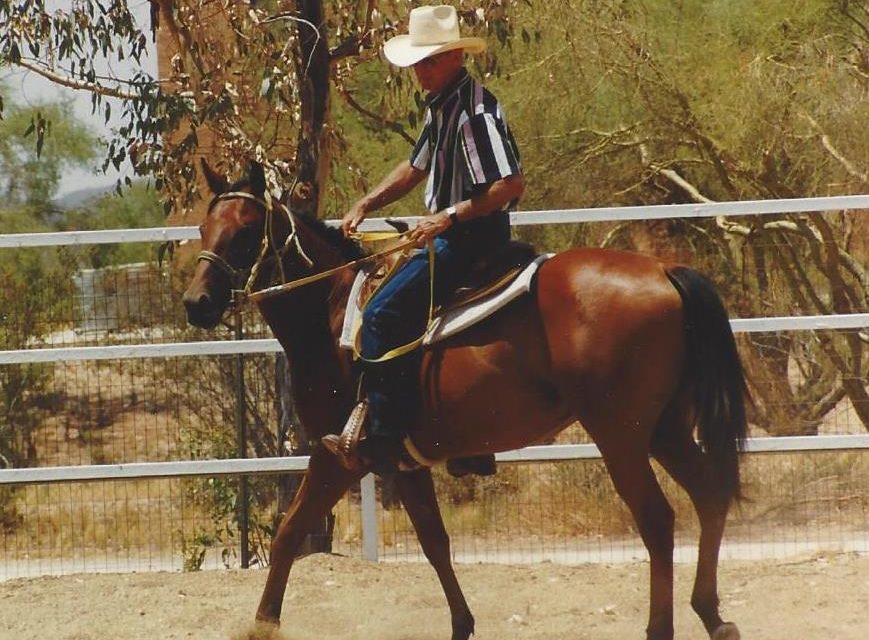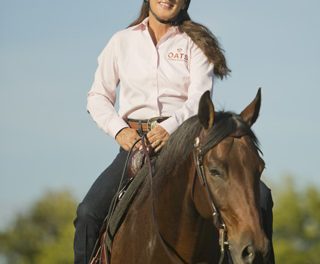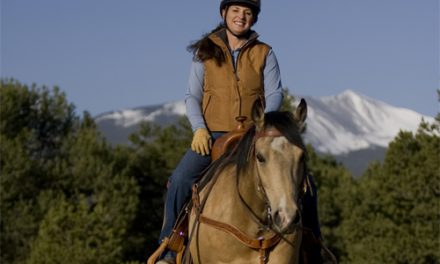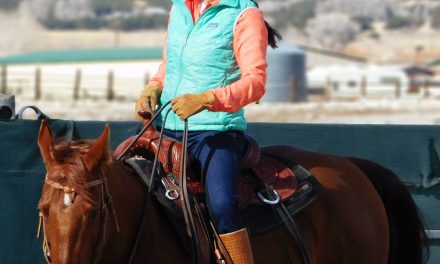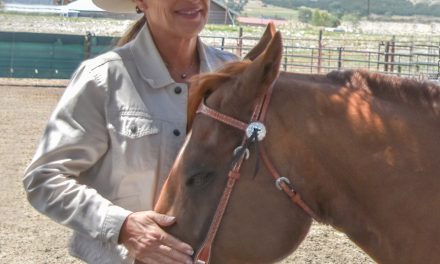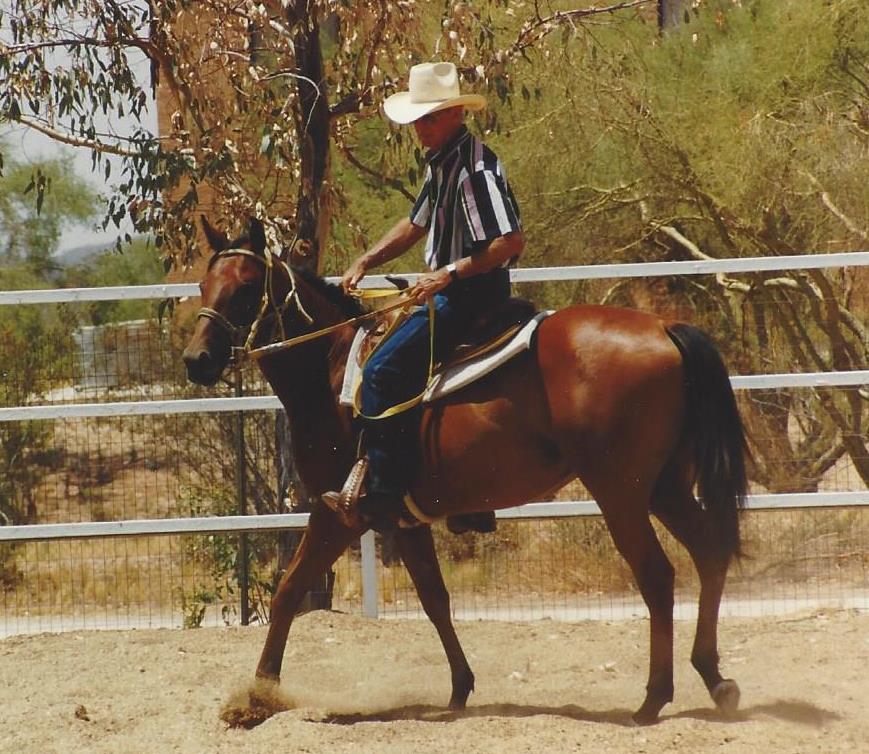 Question: Dear Julie,
Question: Dear Julie,
My husband and I went to your seminar on fear of horses at your horse Expo in Denver and I can’t thank you enough!! I thought we would be the only ones there. I was just amazed at how many people showed up! I have never been afraid of horses (or so I thought), until I bought my own. I always rode lesson horses or horses on ranches that had trail rides. Those horses don’t seem to have a mind of their own. I would get terrible butterflies in my stomach when I would get on my horse and couldn’t wait to get off. I hated the fact that I loved my horse but didn’t want to ride him. I didn’t realize I was doing this to myself, I am one of the “what if’-ers”. After seeing you in person and listening to your CD and reading your book Ride with Confidence, my fear has gone away! I am still riding him in the round pen, but hope to soon feel good enough to ride him in the arena and then beyond! I was wondering if you have a video or a little more of an explanation on the “pulley rein stop”. I do the one rein stop but have often wondered about them falling while being turned if they are running fast. I would like to know more about it. Thanks again! I don’t know if I would have ever gotten over my fear. Just knowing that it was ok to feel that way and how to deal with it made all the difference. Diana and Grizzly
Answer: Diana,
I am thrilled to hear of your success and I really appreciate you letting me know about it. Stay in the round pen as long as you want. Venture out only when you’re ready; it doesn’t matter how long that takes. The more you ride there, the better prepared you will be to venture out. The pulley rein is difficult to teach in an article because it’s really helpful to have visual input, but perhaps this will help.
The pulley rein is an emergency stopping rein, used when your horse is running away from you or taking off bucking. At this time, you do not want to turn your horse, because the turn may cause him to lose his footing and fall down. The pulley rein is executed by shortening one rein as tight as you can and bracing that hand over your horse’s neck, bending your horse’s nose slightly in that direction and pushing your knuckles into your horse’s neck, with your arm braced and centered over its neck. It’s important that this hand is pressed into the neck and not floating free, centered right over the top of your horse’s neck, not to the side. Then slide your other hand down the other rein as far forward as you can and pull that rein straight back and up with all your weight (you’re only pulling with one rein, the other rein is locked and braced against your horse’s neck).
Since the first rein is locked, it’s preventing your horse’s head from turning and he is pulling against his own neck, so the pull on the second rein creates a lot of leverage on his mouth, but keeps him going straight. If the pulley rein is executed correctly, you can stop a runaway horse abruptly, without turning him. This is far more preferable to pulling the out-of-control horse into a turn, since that may cause him to lose his footing and fall down.
Proper execution of the pulley rein requires some practice, which can be very hard on your horse; so many instructors do not like to teach this emergency stopping technique. However, when you’re out of control, it’s a great tool to have in your bag of tricks and it can be very useful for slowing down a strong horse, with a little pulley action every few strides then a release (use it with your half-halt).
One of the very worst things you can do, when trying to slow down or stop a horse, is pull back on both reins at the same time. This will almost always make your horse stiffen its neck and lock its jaw and may also pull you up and out of the saddle, or even right over your horse’s ears. Pulling on both reins continuously will often cause your horse to “run through the bridle,” and the harder you pull the faster he goes. Horses are way more responsive to an alternating use of the reins, which is far more likely to keep them soft in the neck and flexing in the poll. Ironically, most people have been taught to pull back on both reins at the same time to stop, when using one rein can be much more effective. Therefore, the other technique I would teach for better control is a one-rein stop or a disengagement of the hindquarters.
The one-rein stop is very useful for stopping or slowing your horse, if he is not running away from you or bucking. It’s not an emergency rein aid, but one you would use routinely. To execute the one-rein stop, simply lift ONE rein from the normal hand position, up and diagonal toward your opposite hip, as you shift your weight back into the saddle. This will cause your horse to yield his hip as he turns and to disengage his hindquarters (cross his hind legs).
Disengagement of the hindquarters simultaneously causes your horse to stop his forward motion (putting the engine in neutral, so to speak) and become submissive. The instant you feel a change in your horse (well before he actually comes to a stop) drop your hand dramatically to his neck in a clear and meaningful release. You can pick up the rein again if he does not come to a complete halt, but it’s critical to release your horse when he first makes an effort to do the right thing. Timing is everything in horse training and the sooner the release comes, the better.
At first, you may end up turning your horse as he disengages and stops but soon he will stop on the straightaway when you slightly lift one rein. Make no mistake about it, your horse wants to stop; if he isn’t stopping, he just doesn’t understand what is expected of him and his mouth hurts. When a horse doesn’t stop right away, the rider tends to pull steadily harder. A horse’s natural reaction to pain and discomfort is to run away from it. Therefore sometimes your horse inadvertently is taught to speed up when the rider is asking for the stop with two reins.
For more information on using your aids correctly and effectively on your horse, refer to my video series, Goodnight’s Principles of Riding. Good luck and congratulations on your progress. I love to hear success stories and it’s important for others to know it can be done!
Julie Goodnight, Trainer and Clinician
www.juliegoodnight.com
In this series, master trainer and clinician Julie Goodnight discusses the riding terms and techniques you probably know (or should know). She’ll define rein, seat and leg cues you’ll need for the best communication with your horse. Then she’ll help riders solve problems with their own horses. Learn the proper terms and apply your aids for a better grasp of horsemanship and a better riding relationship with your horse.

